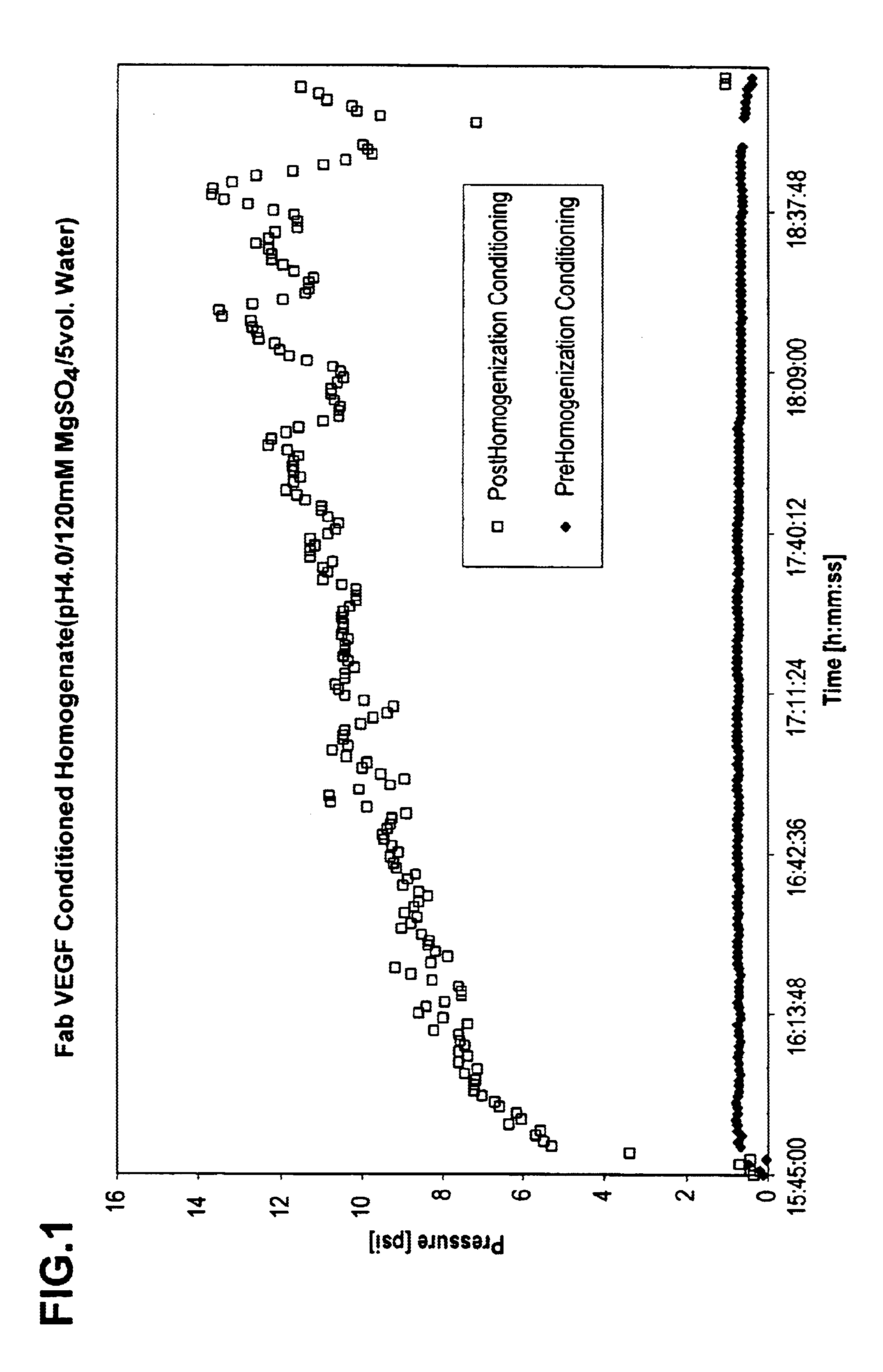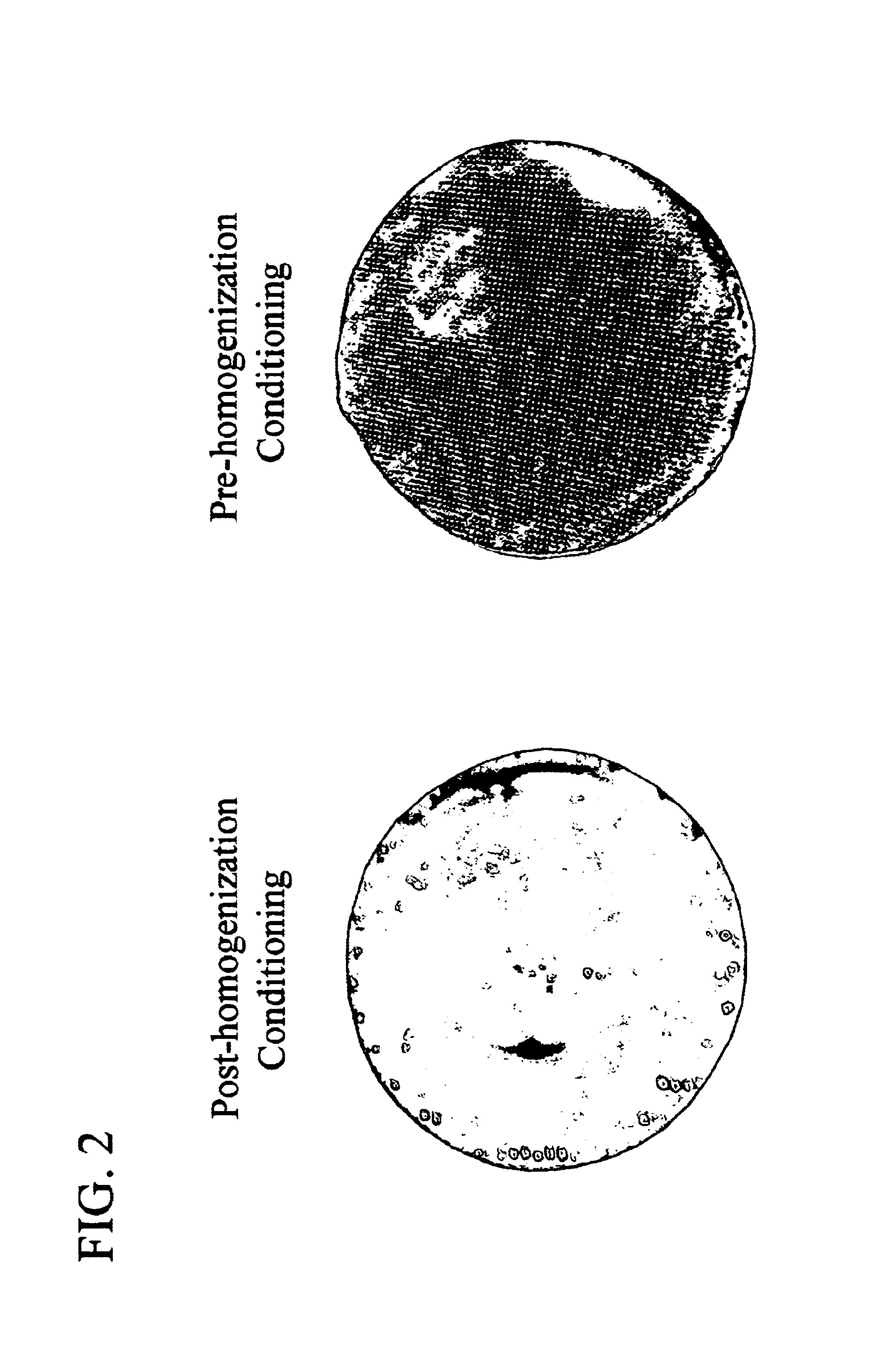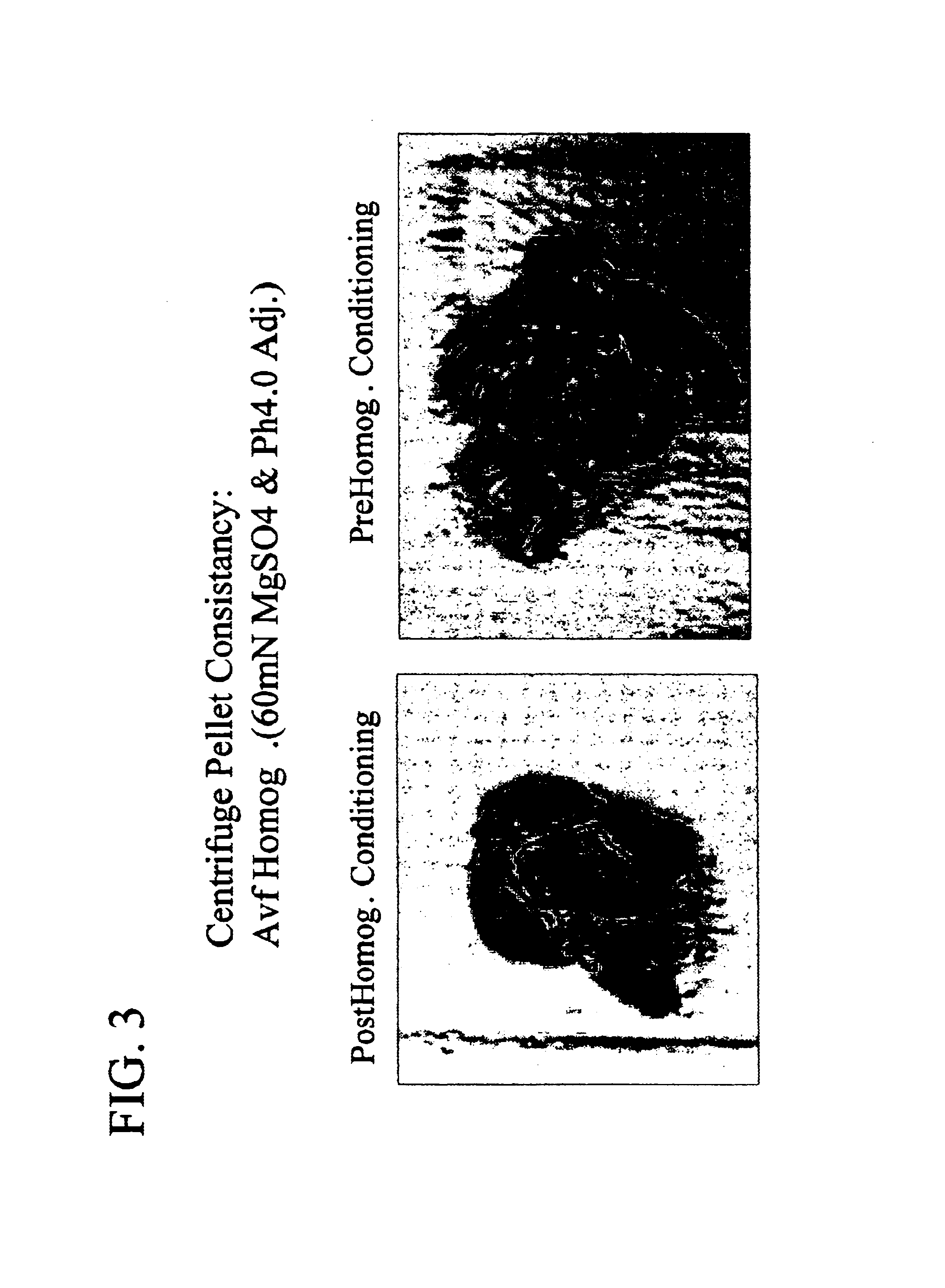Process for protein extraction
- Summary
- Abstract
- Description
- Claims
- Application Information
AI Technical Summary
Benefits of technology
Problems solved by technology
Method used
Image
Examples
example 1
Conditioning E. coli Cells Prior to Disruption Alters Protein Flocculation
[0050]E. coli cells containing a transgene expressing anti-VEGF antibody fragment (Rhufab V2, Chen et. al., 1999 J. Mol. Biol. 293: 865-881) were pre-conditioned before homogenization by lowering the pH of the cell solution to pH 4.0 via addition of 60 mM citric acid. A solubility enhancer, MgSO4, was also added to the cell solution, to a concentration of approximately 120 mM. The cells were disrupted by a 4 pass homogenization with a Model HC-8000 / 3A homogenizer (Microfluidics Corp., Newton, Mass.) at 8000 psig, 2-8° C. After homogenization, 5 volumes of water were added to the homogenate, and the homogenate was passed through an EBC inlet screen (Multilayered SS316L, 100 μm, 1.8 mm thick, 2.5 cm diameter) (G. Bopp & Co., Zurich, Switzerland), with a flow rate of 25 ml / minute (300 cm / hr).
[0051]Control cells were similarly disrupted by a 4 pass homogenization, but with post-homogenization conditioning at pH 4....
example 2
Conditioning of E. coli Cells Prior to Disruption Decreases Fouling of Continuous Disk-Stack Centrifuge
[0054]A pBR322-based plasmid vector was used to express a transgene expressing Fab VEGF (Chen et al., 1999, J. Mol. Bio., 293: 865-881) in E. coli cells (strain: 60E4, genotype: W3110 DfhuA DphoA DhtrA DompT Dptr ilvG2096 DrhaR DfucP). The vector had a rod deletion to produce a higher copy number, and used the phoA promoter for transcription. Each gene contained a heat stable enterotoxin II signal sequence prior to the antibody gene for export to the periplasm. Both tetracycline and ampicillin resistances were intact on the plasmid. The fermentations were done on a 10L scale with a fixed level of phosphate in the media such that the cells depleted phosphate as they grew, leading to induction of the phoA promoter. The E. coli cells were pre-homogenization conditioned by lowering the pH of the cell solution to pH 4.0 via addition of 60 mM citric acid. A solubility enhancer, MgSO4, wa...
example 3
Conditioning of E. coli Cells Prior to Disruption Increases Flow Rate on the EBC Column
[0059]To analyze the effects of pre-conditioning on flow rate, Fab VEGF homogenate obtained from pre-conditioned cells, prepared as described above in Example 1 and with control, post-conditioned homogenate were each added to SPXL Streamline (Amersham Bioscience, Inc. Piscataway, N.J.) EBC columns (2.6 cm diameter×100 cm high) with a resin settled bed height of 30 cm, and an expanded bed height of 90 cm. The EBC columns were each equipped with an EBC inlet screen (Multilayered SS316L, 100 μm, 1.8 mm thick, 2.5 cm diameter). The flow rate of the homogenates through the columns were compared to each other using buffer as a control. The pre- and post-homogenization conditioning samples were prepared at conditioning pH 4.5, 5.0, 5.5, 6.0, and 6.5.
[0060]The results are depicted in FIG. 4, and demonstrate that pre-homogenization conditioning resulted in an increased flow rate through the EBC column. The...
PUM
| Property | Measurement | Unit |
|---|---|---|
| Fraction | aaaaa | aaaaa |
| Fraction | aaaaa | aaaaa |
| Molar density | aaaaa | aaaaa |
Abstract
Description
Claims
Application Information
 Login to View More
Login to View More - R&D
- Intellectual Property
- Life Sciences
- Materials
- Tech Scout
- Unparalleled Data Quality
- Higher Quality Content
- 60% Fewer Hallucinations
Browse by: Latest US Patents, China's latest patents, Technical Efficacy Thesaurus, Application Domain, Technology Topic, Popular Technical Reports.
© 2025 PatSnap. All rights reserved.Legal|Privacy policy|Modern Slavery Act Transparency Statement|Sitemap|About US| Contact US: help@patsnap.com



